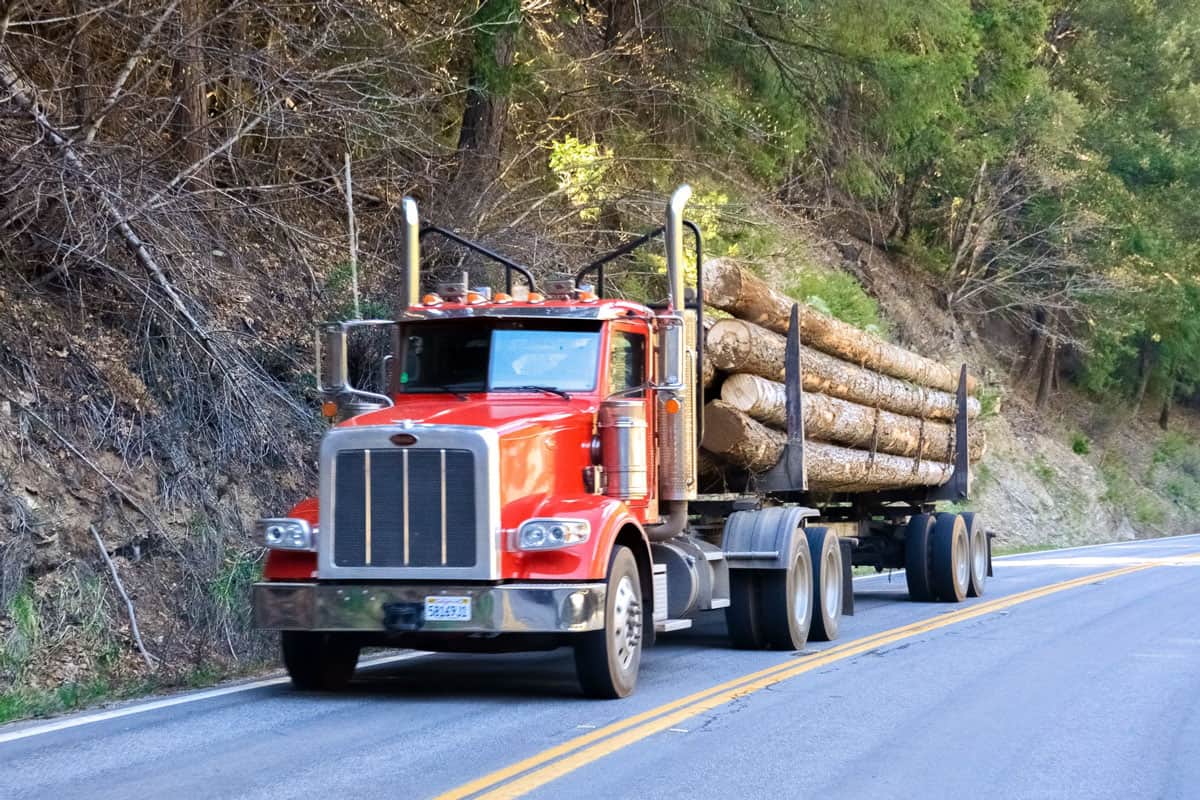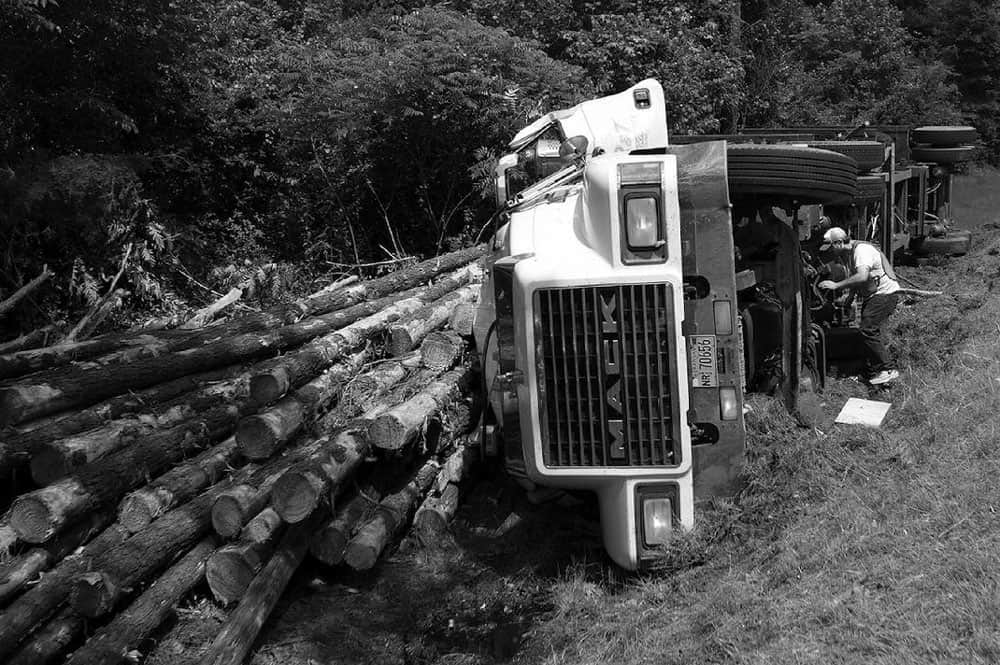Log Truck Insurance 101

Log truck insurance provides vital liability and damage coverage for log haulers transporting millions of tons of logs.
Hauling logs is a tricky business. Drivers have to navigate winding roads – often dirt or gravel – and highways across the country to sawmills.
Get Your Free Insurance Quote
If you operate a log truck or run a fleet of log trucks, it’s essential to understand your insurance requirements and how much it will cost for your coverage.
Logging Insurance Requirements
Logging insurance requirements can vary from state to state. However, most states will require you to carry:
- Liability: A crucial part of your coverage, liability covers physical damage and bodily injury to third parties. It will also cover legal defense costs if a lawsuit is filed.
- Physical damage: A physical damage policy will cover damages to an owned trailer and the truck. When comprehensive is included, it will cover damage from natural disasters, like floods and earthquakes.
- Cargo: As you may have guessed, cargo insurance covers any cargo you’re carrying (e.g., the logs).
- Uninsured motorist: Each state has its own requirements for uninsured motorist coverage, but this is something that you don’t want to skimp on. This policy ensures that damages and injuries will be covered if you’re in an accident with an uninsured motorist or it’s a hit and run.
Limits for these coverages may vary, but higher limits are preferred because accidents and injuries can be very costly with logging trucks.
How Much Does Loggin Truck Insurance Cost?

Premiums for log truck insurance will depend on several factors, including your:
- Location
- Claims history
- Hauling region
- Driving history
- Whether there’s a safety program in place
- Whether you’re a leased owner-operator or own your truck outright
- Age and value of the truck
If you’re an owner-operator who’s leasing, you can expect to spend anywhere from $3,000 to $5,000 a year on log truck insurance.
Owner-operators with their own authority will likely pay more – about $9,000-$12,000 per truck.
Overall, log truck insurance costs between $3,000 and $12,000 per year. These costs assume that you are carrying $750,000 in liability with new equipment.
Why is Log Truck Insurance More Expensive?
Log truck insurance comes at a higher cost because the risk is higher. In addition, hauling logs is different from hauling cargo in an enclosed trailer.
Some of the risks that are unique to logging trucks include:
Truck Tipping
Logs are heavy – and that’s an understatement. All of that extra weight and the way logs are hauled significantly increases the risk of the truck tipping over. A flat tire can easily tip the truck over.
Log trucks often travel on bumpy dirt and gravel roads, which not only increases the risk of a flat, but also increases the risk of the truck tipping.
If a log truck tips over, the damage can be catastrophic. It’s not uncommon for individual logs to weigh a ton (literally). A tipped over truck can easily cause property damage, injuries and even death.
Extra-Heavy Weight
Federal highways have a weight limit of 80,000 pounds, but state highways sometimes have higher limits. Logs are exceptionally heavy, and that enormous weight makes accidents more severe and deadly.
Costly Accidents
The heavy weight of a logging truck makes accidents more costly. An accident with a logging truck is more likely to kill or seriously injure people traveling in passenger vehicles. It’s also possible for a log truck to jack-knife and injure or kill the trucker.
Outside of injuries and fatalities, log trucks can cause massive property damage.
Without proper insurance coverage, an accident with a log truck can easily bankrupt a business or an owner-operator. Additionally, you may have to face lawsuits, and the legal fees will come out of your own pocket.
Comparing Logging Insurance Companies and Saving on Premiums

Like any other type of insurance, it’s important to compare your options and find the best policy at the best price. While you shouldn’t sacrifice coverage for the sake of cost, you can certainly shop around to find the best rate for the coverage you need.
Here are a few ways to reduce your log truck insurance costs
The Bottom Line
If you drive a log truck or you run a fleet of log trucks, having the right type and amount of coverage is crucial. It’s a high-risk sector of the trucking industry, and the last thing you want is to have inadequate coverage. While log truck insurance is more costly than other types of trucking insurance, it’s worth the expense.
Using the tips above and comparing insurance companies or working with a broker can help you save the most money on your premium.

